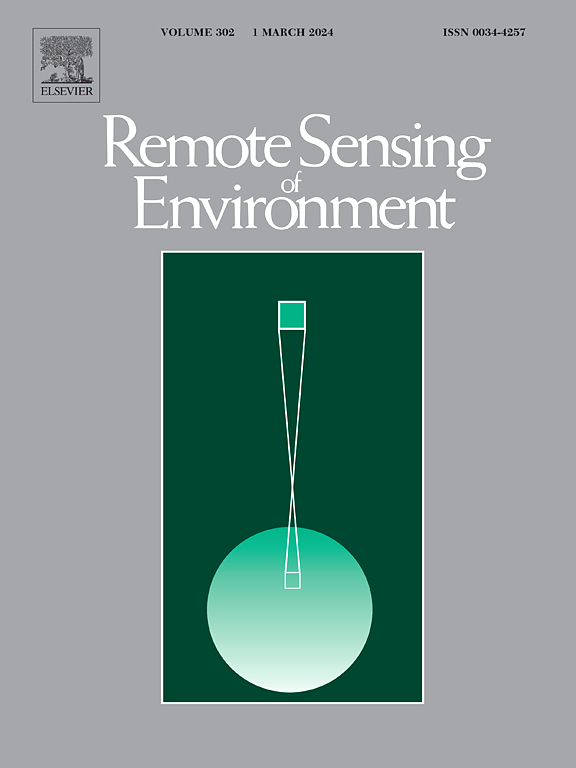A sliding window-based coastal bathymetric method for ICESat-2 photon-counting LiDAR data with variable photon density
IF 11.1
1区 地球科学
Q1 ENVIRONMENTAL SCIENCES
引用次数: 0
Abstract
Coastal bathymetry is of great significance to the development and protection of islands and reefs. Traditional ship-based sonar bathymetry and airborne LiDAR (Light Detection and Ranging) bathymetry make it difficult to efficiently map the water depth of remote islands and reefs. Notably, the photon-counting LiDAR on board ICESat-2 (Ice, Cloud, and Land Elevation Satellite-2) has the capability of shallow water bathymetry. However, the photon data acquired by this instrument is contaminated with substantial noise of varying density. In this study, a sliding window-based coastal bathymetric method (SWCBM-Ph) is proposed for photon data with variable density. Experiments are carried out on six island coasts as an example, and the results show that the method is effective in extracting underwater terrain photons for bathymetry, with RMSE (Root Mean Square Error) of 0.60 m and 0.53 m on low- and high-density photon datasets separately within water depth of 30 m. Compared with existing bathymetry methods, the SWCBM-Ph is less affected by noise signals, and adapts to variations in photon density, including diversities between different datasets and within the same dataset. Therefore, the proposed method helps to improve the stability of spaceborne photon bathymetry for complex situations in coastal waters.
求助全文
约1分钟内获得全文
求助全文
来源期刊

Remote Sensing of Environment
环境科学-成像科学与照相技术
CiteScore
25.10
自引率
8.90%
发文量
455
审稿时长
53 days
期刊介绍:
Remote Sensing of Environment (RSE) serves the Earth observation community by disseminating results on the theory, science, applications, and technology that contribute to advancing the field of remote sensing. With a thoroughly interdisciplinary approach, RSE encompasses terrestrial, oceanic, and atmospheric sensing.
The journal emphasizes biophysical and quantitative approaches to remote sensing at local to global scales, covering a diverse range of applications and techniques.
RSE serves as a vital platform for the exchange of knowledge and advancements in the dynamic field of remote sensing.
 求助内容:
求助内容: 应助结果提醒方式:
应助结果提醒方式:


